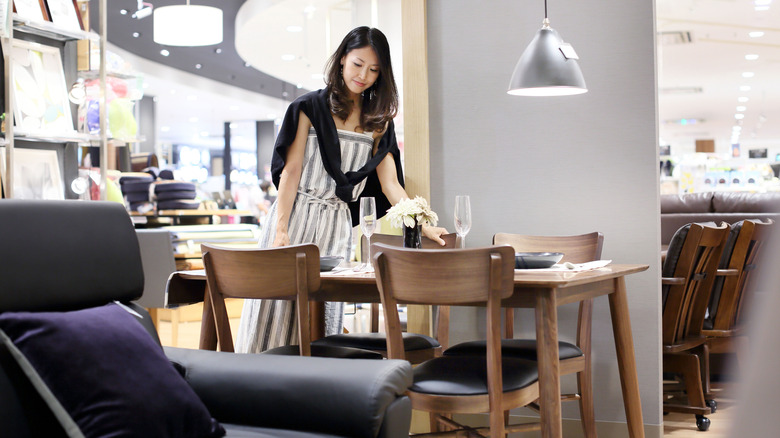The Interior Home Trend Designers Are Happy To Put Down, And Why It's For The Best
Some of the interior design trends that have gained popularity are better left untouched. Not every trendy home decor piece is worth implementing into your living space. For example, designers are happy to put down the popular trend of using faux materials throughout a home. Think fake marble countertops, fake stone, or vinyl faux wood flooring. Although these materials are cheaper upfront, they come with downsides and just don't measure up to the real deal. They are typically more easily damaged and can even decrease the air quality inside your home.
While speaking with MarthaStewart.com, home designer, licensed therapist, and "Home Therapy" author Anita Yokota explained why natural materials are the better option. "Neuroscience shows that our sensory systems respond to the micro-irregularities and tactile depth of natural materials," she explained. "Real wood, stone, linen, and clay all have subtle variations that activate the parasympathetic nervous system, helping our brains feel grounded and safe." Natural materials also tend to last longer
Although faux home interior materials are not the best choice, they're quite popular. There has been an undeniable uptick in faux interior design materials used throughout homes in recent years. In fact, the particleboard market is set to pass $41 billion by 2032, according to a market forecast published by Global Market Insights. As you may already know, particleboard is commonly used to craft faux wood furniture pieces. The rise is largely attributed to an increase in demand for affordability. However, it might be worth it to explore alternatives that are affordable but still made of natural materials.
Designers prefer natural interior design materials
It's no surprise that designers prefer natural interior design materials, as there are quite a few downsides to faux materials that can make them quite the headache. Particleboard, for example, is not nearly as durable as wood. It's often coated in a thin plastic layer that easily chips or cracks. Particleboard can also release harmful Volatile Organic Compounds (VOCS) into the air, such as formaldehyde. Similarly, the downsides of faux wood flooring also serve as a reminder of why opting for natural materials is the better choice. They are often made from laminate or vinyl. The problem with these materials is that they can also emit VOCs and are not as resilient. They cannot be refinished like real wood planks.
Interested in making the switch to natural materials? You can find durable, real wood vintage pieces at most thrift stores. Give them a new life by completing DIY upcycles. As for built-in materials, you also have more affordable options that are still natural. For example, rather than opting for pricey marble countertops or a cheap replica that won't last long, you could install a real wood butcher's block countertop in your kitchen. This is more affordable, but it's still a soothing natural interior design material that looks great. It's worth switching out synthetic fabrics for natural materials, too. Think cotton, linen, or wool when it comes to items like blankets, curtains, and pillows.

